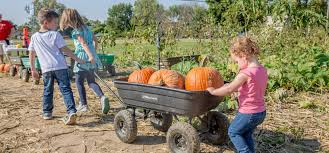DAFFODILS /
NARCISSUS
 |
Externally hardy and long lived, daffodils will brighten your spring garden every year with very little care. |
Of all the beautiful
spring flowering bulbs from early snowdrops to late blooming tulips, few are
more dependable than daffodils. For
a reliable display you can count on year after year, these popular
perennials will give you 'the big
bang' for your time and money.
All parts of daffodils are toxic so deer and other wildlife pass it by as they devour the other plants in the environment. If you live in an area with deer, daffodils are one of the few fool proof plants you can count on.
 |
| \ Deer will devour almost everything in sight but pass daffodils by, leaving them to bloom for our enjoyment. |
Once properly planted daffodils
will come back for many years, blooming in early spring with very little care.
There is a long standing
debate on the correct name, Narcissus, Daffodils or Jonquils. In this article I am simply going to use the
most common name in our area, daffodils for all of them.
Trumpet shape flowers
which begin to bloom in April, daffodils have a large selection of color
patterns to choose from. The most popular yellow will brighten up any garden
from the front door to large displays in back yards or even in open fields. In
addition pure white flowers are available as well as mixed trumpets blends of
two or three colors on the same flower.
 |
For the largest variety of daffodils and the best quality of bulbs order them from a good catalog company. |
Easy to plant, place the
'bottom' of the bulbs six to eight inches in the ground, 5 to 6 " apart. They will
fill in quickly.
 |
| The bulb is a storage chamber supplying everything the daffodil needs to survive until next spring. |
In our clay soil and
handful of chopped leaves will lighten the soil and help with drainage. If you
don't have leaves take advantage of your neighbors who mow their leaves and put
them on the street.
 |
There are so many color combinations such as 'Fragrant Breeze' you can to to your daffodil display every year for more interest and impact. |
After daffodils have
bloomed leave the green leaves until they turn yellow before cutting them back.
These leaves will supply the energy for next year's bloom. One of the few drawback of daffodils is that
these leaves will remain until early June. When planting my summer flowering
plants, I simply push the greens aside and put the new flowers between them.
They quickly over grow the yellowing leaves and draw attention away from them.
One of the few yearly task
you should do to help your daffodils remain viable is to cut off the dead flowers after they have
bloomed, a technique known as dead-heading. This will force the bulbs to transfer major energy from setting seed
into producing next year's flowers and ensuring a healthier bulb to survive the winter. I also sprinkle a fertilizer such as bulb tone around the greens when dead-heading the flowers.
 |
When your daffodils have become overcrowded they will flower less. This is the time to lift them out of the ground, gently wiggle apart and replant them to increase your display. |
If your flowers begin to
dwindle it's time to dig up the bulbs and divide them. This should be
required only once every ten years. This process will re-new your bulbs and double your stock.
 |
Hybridizing daffodils has created color blends and textures that are dramatically different from the original trumpet parent plants. Above: Double Narcissus 'Cherefulness' |
James









